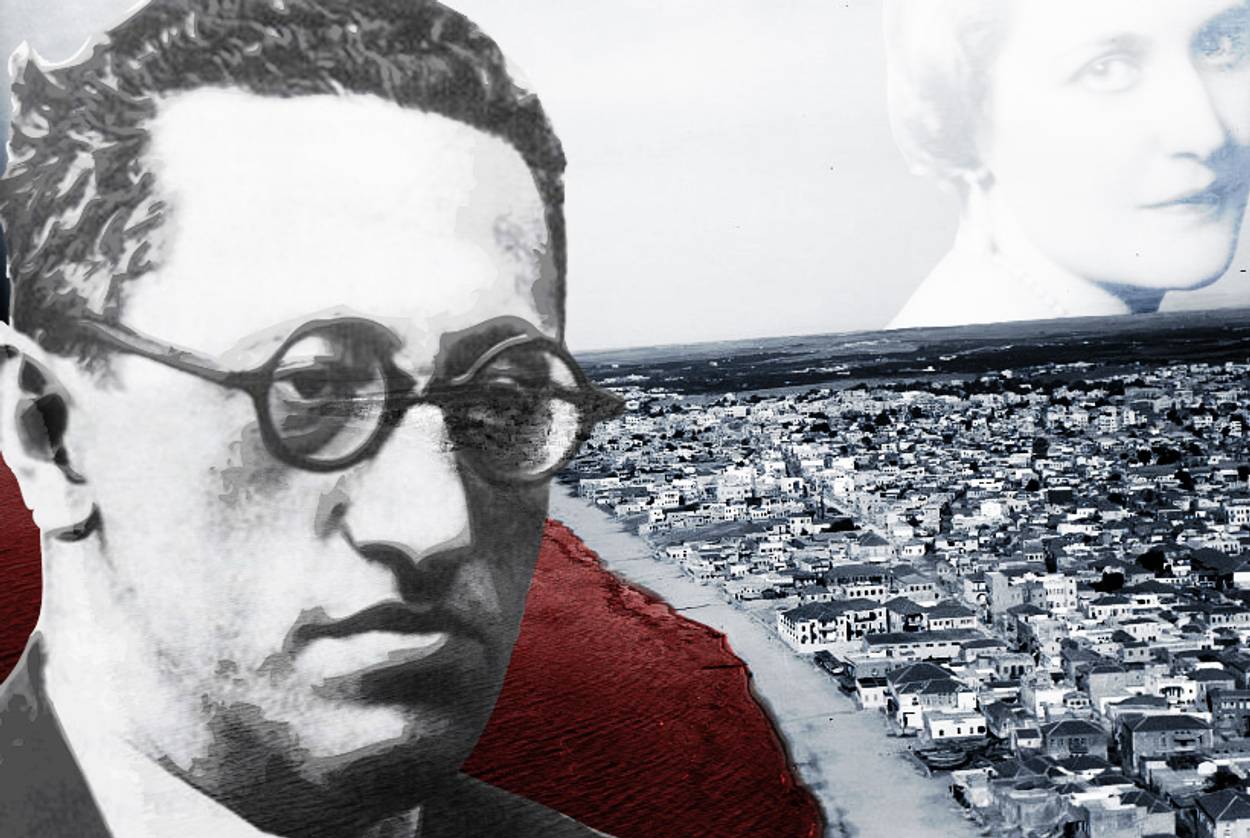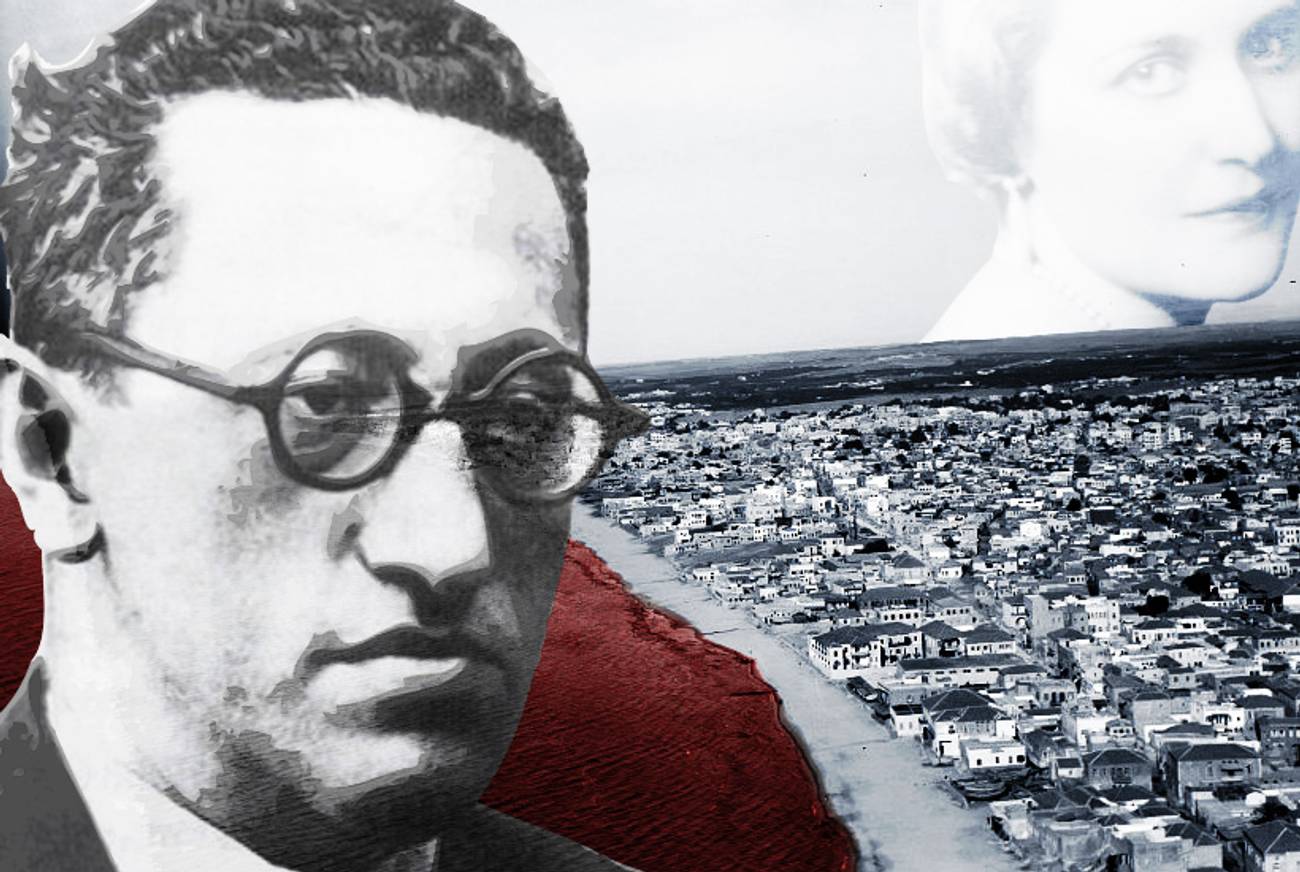Zionist Leader Haim Arlosoroff Was Murdered So That Israel Could Live
The notorious political assassination, still unsolved 80 years later, is instrumental in in keeping Israeli politics sane




Eighty years ago this month, Haim Arlosoroff, one of the most prominent leaders of the pre-state Jewish community in Palestine, was murdered on the beach in Tel Aviv. The crime remains unsolved and has spawned any number of conspiracy theories: To hear different people tell it, Arlosoroff was shot by the far right, the far left, the Arabs, or the Nazis, with each of these theories revealing not only facts about a specific crime but also much about the still unstable political psyche of a young nation. Eighty years and one political assassination later, Arlosoroff’s unsolved murder continues to haunt Israel.
***
On Saturday night, June 16, 1933, Haim Arlosoroff and his wife Sima were sipping coffee at the Kate Dan hotel overlooking the Mediterranean, unwinding after what had been an exhausting week. Two days earlier, Arlosoroff had returned from a long trip to Europe that took him to London, Brussels, and Berlin. He was there to try and negotiate with the newly ascendant National Socialist Party and arrange for the safe passage of Germany’s Jews and their property to Palestine. It was a doomed mission—the Nazis would not meet directly with a Jew, and Arlosoroff’s efforts to find a British interlocutor failed. More poignantly, political opponents back home did not take kindly to the idea of an official representative of the Jewish community negotiating with Hitler. Arolosoroff, declared the newspaper of the right-wing Revisionist movement, was selling out to Hitler because he was greedy; he was a traitor to boot, an internationalist agitator, a knife in the back of the Jewish nation. “The Jewish people,” read one typically ominous bit of criticism, “have always known how to treat those who betrayed their dignity and the dignity of the Torah, and we will know how to respond now that such a travesty is being committed in full view of the entire world.”
These were harsh words, but Arlosoroff was unmoved. At 34, he was one of the youngest and fastest-rising leaders of the leading Mapai party, the political director of the Jewish Agency, and no stranger to controversy. In 1933 alone he had clashed bitterly with David Ben Gurion over whether or not the Zionist movement ought to increase its influence in the British Parliament and organized a rare and heatedly criticized meeting between Arab and Jewish leaders in the hopes of facilitating peace. When he sat down for a late coffee at the hotel, then, a crowd of onlookers gathered nearby, gawking at him and making catcalls. Arlosoroff, after all, was the biggest celebrity in the tiny town.
Miffed by all the unwelcome attention, Haim and Sima Arlosoroff decided to seek privacy by taking a stroll on the beach. Soon, however, Sima noticed that they were being trailed by two men, one short and the other tall. To shake off the stalkers, the couple left the beach and dashed for a while into a nearby neighborhood. When they felt safe, they returned to the beach and resumed their leisurely stroll. Soon, however, the two men reappeared. They walked toward the Arlosoroffs. One of them shined a light in Haim Arlosoroff’s face.
“Why are you bothering us?” asked Arlosoroff, and Sima, annoyed, pleaded with the men to leave them alone.
“How much is the time?” asked the tall one, cryptically.
“It’s none of your business,” replied Arlosoroff.
“How much is the time?” came the question, so awkwardly worded, once again. Haim and Sima Arlosoroff began to walk away. The short stalker drew out a gun and fired it once, hitting Haim Arlosoroff in his stomach. Then the two men ran away. Sima called for help, and a car soon materialized to rush Arlosoroff to the hospital. He died there three hours later. The next day, his coffin was publicly displayed, wrapped in a tallit, a Hebrew flag, a red flag, and a stripe of black cloth. Then the accusations started flying.
To give each of them its merit would take decades, and did: As late as 1982, then-Prime Minister Menachem Begin, eager to clear his Revisionist movement from all accusations of historical wrongdoing, took the unlikely step of appointing an official committee to investigate a crime cold for 49 years. The committee reviewed the facts, interviewed all living witnesses, and determined that it was impossible to conclude who had pulled the trigger and why. The main culprits at the time, a small band of right-wing activists affiliated with Ze’ev Jabotinsky’s Beitar movement, were tried by the British mandatory court and released for lack of evidence. Going another route, many at the time of the murder were moved by the testimony of Abdul Majid, a local Arab man who confessed, of his own accord, to having committed the crime. He later retracted this story and then retracted the retraction and said he’d shot Arlosoroff, but only because he was promised a fortune by the right. Those who believed he was the shooter pointed out that the assassin’s seeming lack of command of Hebrew—asking “how much is the time” rather than “what time is it”—suggested he was not Jewish.
The most prominent suspect, however, if the least credible one, was Magda Goebbels, the wife of the Nazi minister of propaganda. As a recently published novel—written by a former French cultural attaché in Israel and based largely on facts—claims, Magda Goebbels had reason to want Arlosoroff dead. Growing up next to the Arlosoroffs in Berlin in the 1910s, Goebbels, then named Magda Friedlander, was the adopted daughter of the Jewish man who had married her mother and a close friend of Lisa Arlosoroff, Haim’s sister. She was also friendly was Haim himself, although just how friendly is a matter of speculation. The book’s author, Tobie Nathan, imagines the two as lovers: eloquent, charismatic, intelligent, and ambitious, Arlosoroff was just the sort of man to whom the future Mrs. Goebbels was clearly drawn. In his book, Nathan speculates that Arlosoroff, upon arriving in Berlin in 1933, tried to schedule a meeting with his former lover. Incensed, and terrified that her past romantic entanglement with a prominent Jew might destroy her standing as Nazi Germany’s de facto first lady, Madame Goebbels secretly traveled to Palestine and contracted local killers to do her bidding.
It’s a wild story, of course, but no wilder than all the others.
***
In a way, though, it’s not the answers to the riddle Israelis are interested in but the question itself. In popular culture, “Who killed Arlosoroff?” is still a common phrase, presented not as a plea for answers but as an invitation to a discussion. A nation whose political discourse is so heavily predicated on certainties—on the strong belief in a particular and immovable worldview—couldn’t have asked for a better therapeutic device than an unsolved—and seemingly unsolvable—mystery that invites each person to speculate and by speculating to turn his or her own biases, prejudices, and fears into wild but still plausible theories.
This cathartic function was intensified in 1995, when an Orthodox right-winger named Yigal Amir assassinated Prime Minister Yitzhak Rabin. Even though the Rabin assassination, unlike Arlosoroff’s, was an open-and-shut case, it didn’t take long for wild conspiracy theories to circulate: A poll conducted as recently as 2010 proves that only two-thirds of Israelis believe with certainty that Amir was the assassin, with the rest placing the blame with the secret service, the Labor Party, and a host of other improbable culprits. In 1995 as in 1933, an attempt to use an assassination in order to vilify the right failed miserably.
And that’s a good thing. While there could be little doubt that Amir was motivated in large part by the preaching of fundamentalist rabbis and encouraged, perhaps, by the inflammatory declarations of right-wing politicians, a state as small and a society as intricately woven as Israel’s might not have survived the blow that was sure to come, had the outrage continued to escalate and the mad grief caused by the assassination led to a full-fledged civil war pitting right against left and secular against religious. In 1995, Israel, in part, turned on its Arlosoroff safety valve and engaged in a tradition of floating around conspiracy theories, some knowingly silly, in order to exorcise its demons in a nondestructive way. In a sense, it still does: The Arlosoroff assassination is still hotly debated, consuming energy otherwise traditionally reserved for real violence. Eighty years after he was shot to death on the beach in Tel Aviv, Haim Arlosoroff continues to be Israel’s most instrumental politician.
***
Like this article? Sign up for our Daily Digest to get Tablet Magazine’s new content in your inbox each morning.
Liel Leibovitz is a senior writer for Tablet Magazine and a host of the Unorthodox podcast.
Liel Leibovitz is editor-at-large for Tablet Magazine and a host of its weekly culture podcast Unorthodox and daily Talmud podcast Take One. He is the editor of Zionism: The Tablet Guide.